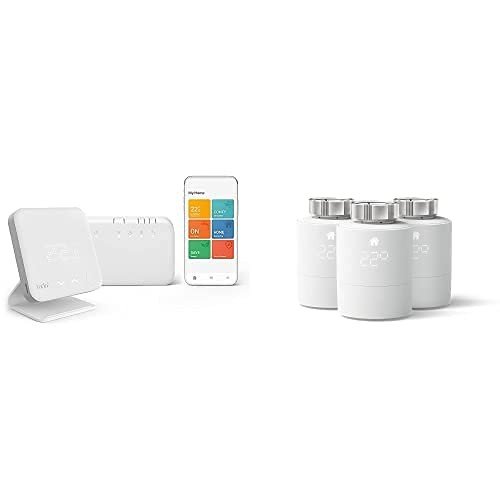Shop Lighting UK: Illuminating the Retail Experience
In the ever-evolving world of retail, the significance of shop lighting can not be overstated. It not only enhances the visual appeal of items but likewise influences consumer habits, their state of mind, and the overall shopping environment. With improvements in technology and style, shop owners in the UK have a myriad of choices to pick from when it emerges options. This post will explore the kinds of lighting offered, their advantages, and considerations for producing the perfect atmosphere in a retail space.
Significance of Proper Shop Lighting
Effective shop lighting plays an essential function in consumer experience and can substantially affect sales. Here are some essential reasons that appropriate lighting is essential for retail environments:
- Highlighting Products: Good lighting draws attention to products, making them more appealing to consumers.
- Developing Atmosphere: The best lighting can set the mood and stimulate feelings, influencing getting choices.
- Enhancing Safety: Well-lit stores are much safer, helping consumers navigate without risk of tripping or accidents.
- Improving Visual Merchandising: Proper lighting can enhance displays, making them lively and distinctive.
Kinds Of Shop Lighting
Shop owners can pick from various types of lighting, each serving various purposes, consisting of ambient, task, accent, and decorative lighting. Here's a breakdown of each type:
| Type of Lighting | Description | Best Uses |
|---|---|---|
| Ambient Lighting | Offers general illumination to the area. | General retail locations like stores and supermarkets. |
| Task Lighting | Focuses on particular areas to improve visibility for tasks. | Checkout counters and dressing rooms. |
| Accent Lighting | Highlights particular products or displays, developing a centerpiece. | Display cases, art, or marketing products. |
| Decorative Lighting | Adds aesthetic appeal and improves the overall decor. | Chandeliers and distinct fixtures in high-end shops. |
1. Ambient Lighting
Ambient lighting is the foundational lighting within a shop. It fills the whole space, making sure that customers can see and browse comfortably. Retailers must consider utilizing LED panels or ceiling-mounted fixtures, as they offer energy efficiency and excellent light distribution.
2. Task Lighting
Task lighting is vital for locations where specific activities occur, such as checkout counters or workstations. Shop owners can install under-cabinet lighting or track lights to focus illumination on these locations, improving the benefit and experience for both staff and clients.
3. Accent Lighting
Accent lighting helps accentuate specific items or functions within the store. This type of lighting can be attained through spotlights, track lights, or strategically positioned wall-mounted fixtures. Highly recommended Resource site is particularly reliable for showcasing included products, advertising screens, or artwork, assisting client focus where it's most required.
4. Decorative Lighting
Beyond functionality, decorative lighting aspects add design and character to a retail space. Distinct fixtures, such as pendant lights or large chandeliers, can develop a memorable environment, especially in boutiques or high-end retailers. These statement pieces not just illuminate however also enhance the shop's branding and aesthetic appeal.
Selecting the Right Lighting for Your Shop
When selecting lighting for a retail environment, shop owners ought to consider the list below elements:
- Store Type: Different kinds of retail require differing lighting solutions. A precious jewelry store might need softer, more focused lights, while a supermarket may need brighter ambient lighting.
- Color Temperature: The color of light can impact the perception of products. Warm lights (under 3000K) produce a cozy feel, while cool lights (above 3000K) can make a space feel more contemporary.
- Energy Efficiency: The use of LED lighting not only saves energy but likewise reduces expenses in time.
- Versatility: Install dimmers or adjustable fixtures to adapt lighting for different occasions or seasonal modifications.
The Future of Shop Lighting
As technology progresses, shop lighting is becoming increasingly sophisticated. Here are some trends forming the future of retail lighting in the UK:
- Smart Lighting Solutions: Integrated technology enables push-button control and automation of lighting systems by means of smart devices or home assistants.
- Sustainable Lighting: There is a growing focus on environmentally friendly solutions, with sellers opting for products that minimize environmental impact.
- Centerpiece Lighting: Retailers are progressively using lighting to produce specific centerpieces that assist client traffic and enhance product screens.
Frequently Asked Questions about Shop Lighting in the UK
Q: What is the best type of lighting for a clothing store?A: A mix of
ambient and accent lighting is normally best. Ambient lighting is necessary for general presence, while accent lighting can assist highlight crucial pieces or collections. Q: How can I make my shop lighting more energy-efficient? A: Consider using LED lights, setting up motion sensors, or integrating
dimmers. This minimizes energy consumption and costs in the long run. Q: Should I use natural light in my shop?A: Yes, making use of natural light can enhance client experience whileminimizing energy expenses. However, it is essential to stabilize natural light with synthetic lighting, specifically on cloudy days. Q: How typically should I change my shop's lighting fixtures?A: This depends upon the type of fixtures utilized. LED lights can last up to 25,000 hours, while traditional bulbs
might need to be changed more often. Regular upkeep checks are advised. In a progressively competitive retail environment, shop lighting plays an important role in forming client experiences and driving sales. Retailers in the UK have a large array of alternatives and technologies at their disposal to create the ideal atmosphere. By comprehending the importance of the various types of lighting and how to implement them successfully, shop owners can boost their area, making shopping more pleasurable for consumers while increasing their bottom line.

